Animating history
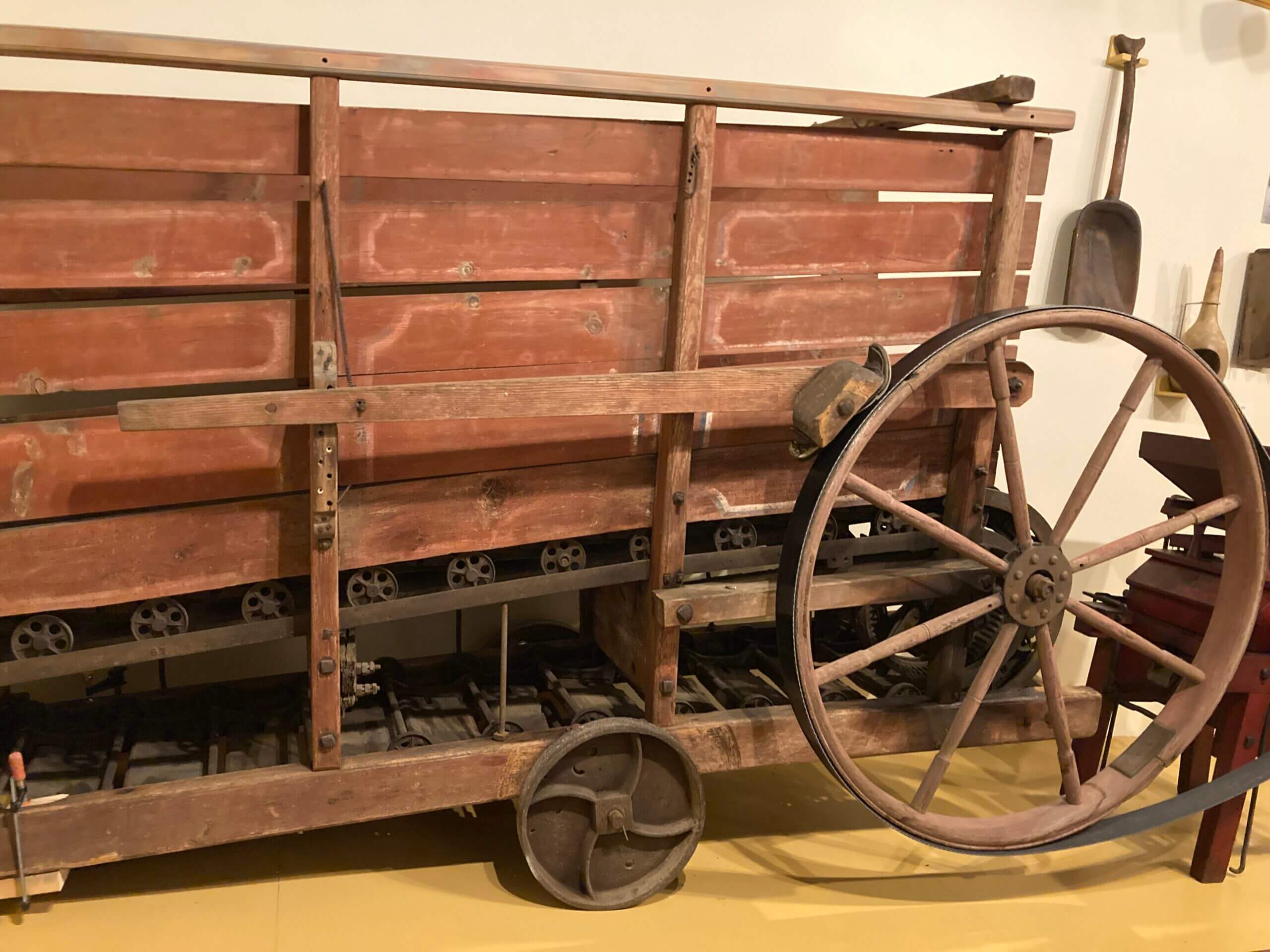
Step into 1777. Articles of Confederation Day, Nov. 15 at York’s Colonial Complex. Hands-on history, live reenactments, 18th century market. Celebrate the events in York where America became a nation.
For details


By The Exhibit Design Team
When the History Center’s core exhibit opens in the new museum, library and archives, visitors will see many of the best-known items in our collection, from the A-frame Ammonia Compressor and Conestoga Wagon to the Weaver Player Piano and the 1916 Pullman Deluxe Opera Car. Next to these large items will be a series of digital interactive exhibits to encourage visitors to dive deeper into the artifacts, images and stories in York County history.
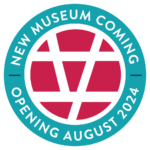 History Center staff and team members from the Richard Lewis Media Group (RLMG), a digital design studio that specializes in services for museums, have spent several years developing the digital elements that will accompany these prized pieces. To give you a sense of the complexity of this work, we’re taking you behind the scenes on the creation of the digital content that will accompany one of the six artifacts that were animated for this interactive kiosk, the horse-powered treadmill.
History Center staff and team members from the Richard Lewis Media Group (RLMG), a digital design studio that specializes in services for museums, have spent several years developing the digital elements that will accompany these prized pieces. To give you a sense of the complexity of this work, we’re taking you behind the scenes on the creation of the digital content that will accompany one of the six artifacts that were animated for this interactive kiosk, the horse-powered treadmill.
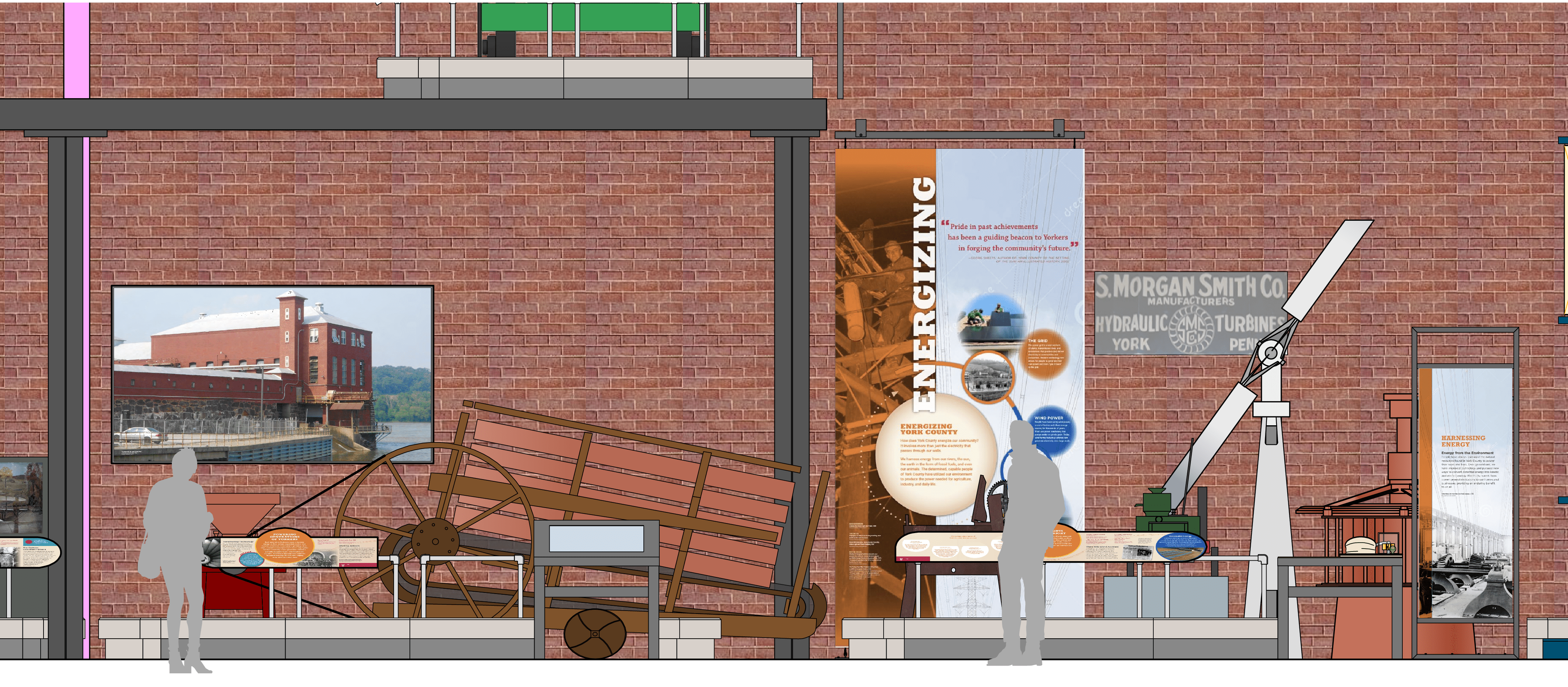 When exhibit developers and museum staff design a gallery, part of what they must decide is how to display historic objects and where to place digital screens. This rendering of the Energizing York County area of the exhibit shows the objects selected for display, including the large horse treadmill on the left. The small light blue rectangle in front of the treadmill is a digital touchscreen. The History Center tasked RLMG, the audio-visual exhibit producer on this project, with developing a digital interactive exhibit for that screen.
When exhibit developers and museum staff design a gallery, part of what they must decide is how to display historic objects and where to place digital screens. This rendering of the Energizing York County area of the exhibit shows the objects selected for display, including the large horse treadmill on the left. The small light blue rectangle in front of the treadmill is a digital touchscreen. The History Center tasked RLMG, the audio-visual exhibit producer on this project, with developing a digital interactive exhibit for that screen.
Building an engaging and user-friendly digital experience involved a team of experts, including a content developer, graphic designer, illustrator, animator, audio editor, and a programmer. By applying their creative and technical skills to this task, the RLMG team developed delightful animations of each object on display, including for the horse treadmill. – Cici Clark, RLMG
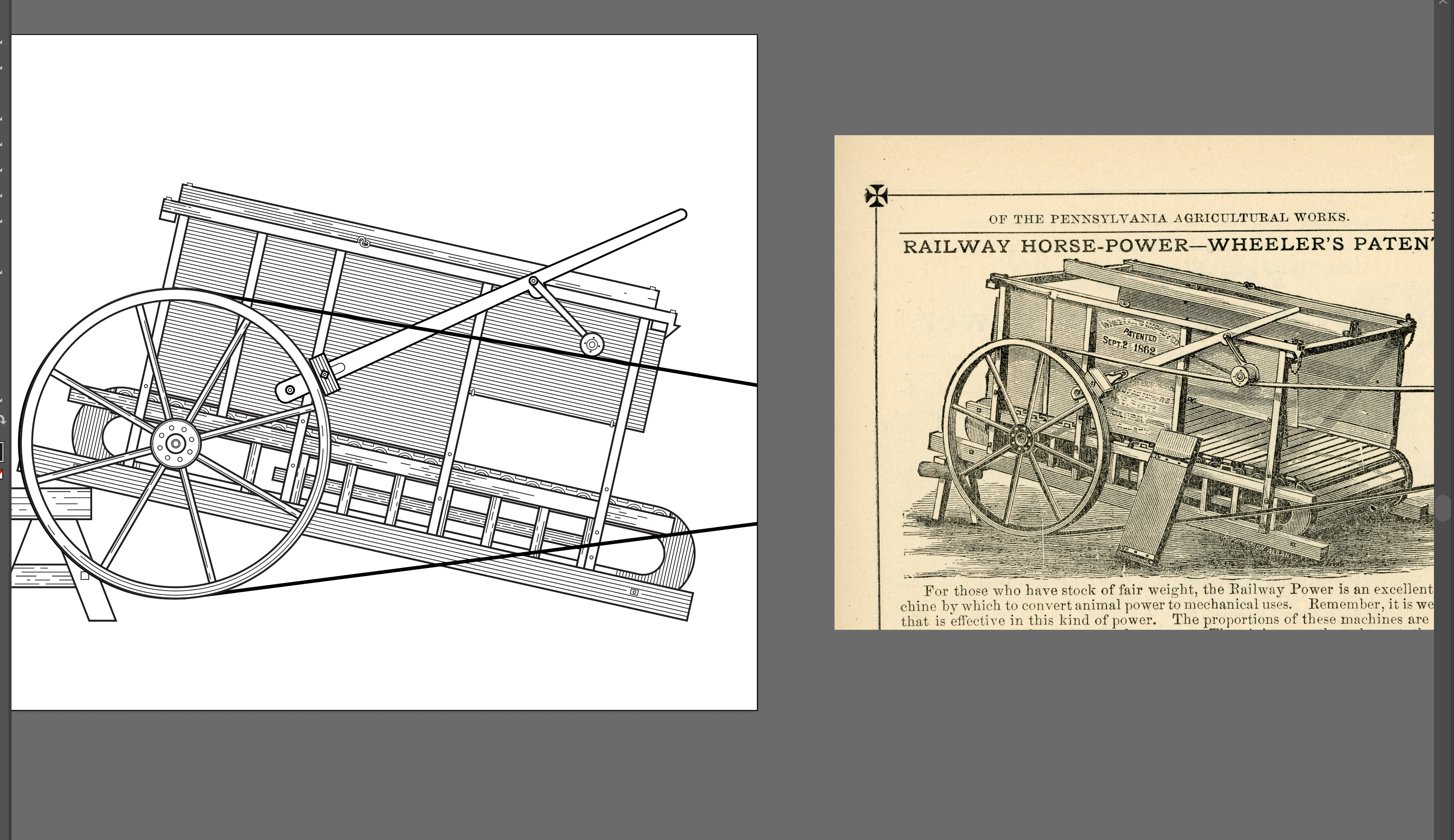 Once the History Center team approved RLMG’s design approach for the Energizing York digital interactive, the next step was to find suitable archival reference images for each of the objects. For the horse treadmill, an archival drawing from a Pennsylvania agricultural works catalog provided inspiration. Using that reference image on the right, RLMG’s illustrator first hand-drew the treadmill on paper before importing the sketch into an editing program. Then, using a digital pen and tablet, she carefully traced the sketch to create the illustration on the left. The entire process required careful organization and planning. To support the animation stage of the process, the illustrator needed to draw each element, including the cart, wheels, belts, rollers, cables, and stool on individual layers before handing them off to the animator to add motion. – Cici Clark, RLMG
Once the History Center team approved RLMG’s design approach for the Energizing York digital interactive, the next step was to find suitable archival reference images for each of the objects. For the horse treadmill, an archival drawing from a Pennsylvania agricultural works catalog provided inspiration. Using that reference image on the right, RLMG’s illustrator first hand-drew the treadmill on paper before importing the sketch into an editing program. Then, using a digital pen and tablet, she carefully traced the sketch to create the illustration on the left. The entire process required careful organization and planning. To support the animation stage of the process, the illustrator needed to draw each element, including the cart, wheels, belts, rollers, cables, and stool on individual layers before handing them off to the animator to add motion. – Cici Clark, RLMG
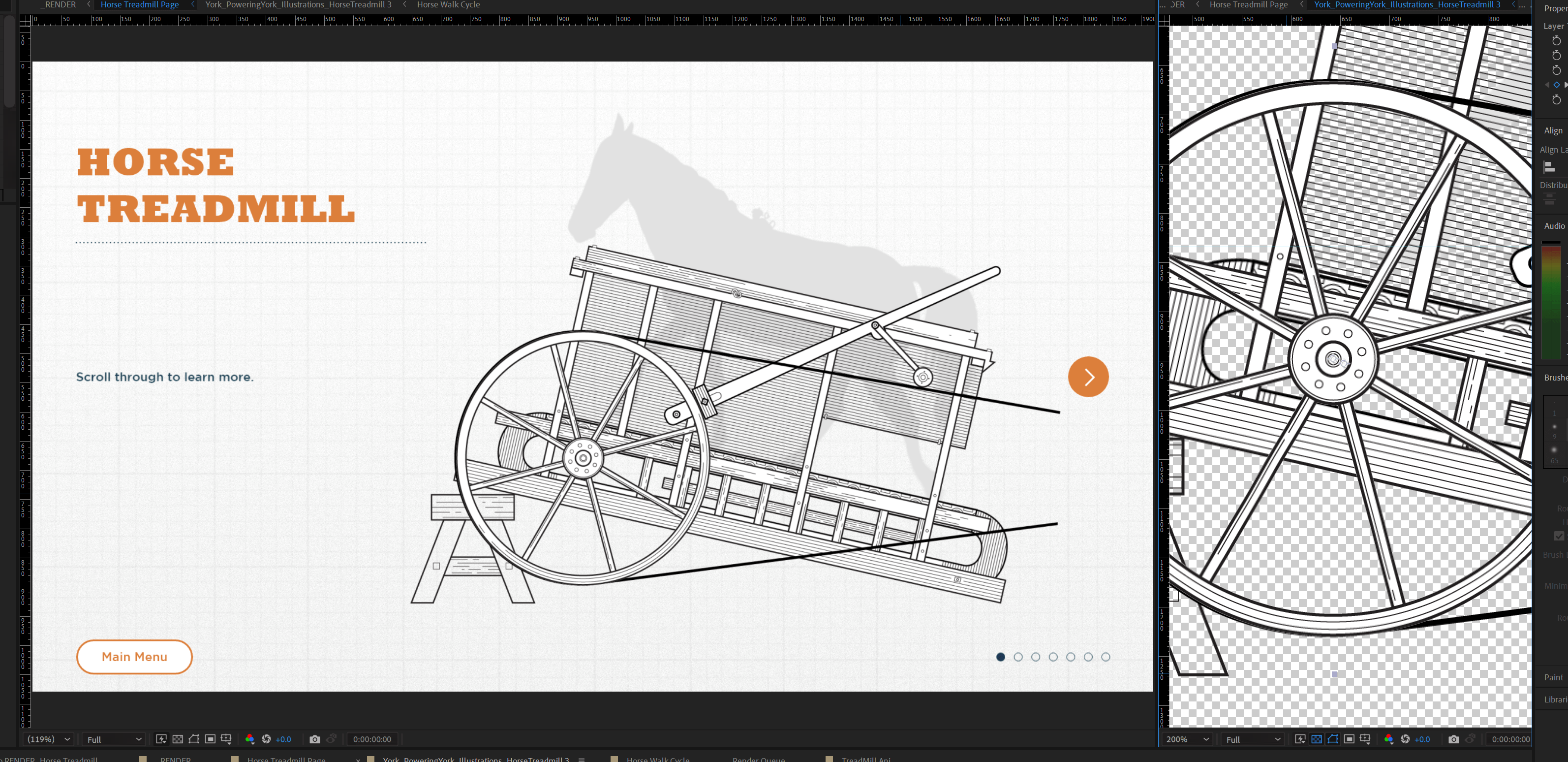 Animation adds a touch of whimsy and delight to a digital exhibit but involves a good deal of coordination and planning. Before the animation work began, RLMG’s animator sourced a video of a walking horse from a stock video site and transformed the file into a silhouette. The animator then coordinated the movement of the illustrated treadmill parts to match the horse’s gait, or walking pattern. A technical challenge was to create the shortest loop possible that synced the movements of the horse and the machine. A shorter animation loop results in a smaller file size, which is better for programmers. The RLMG team also decided to add an audio track. The team combined sounds of a working horse treadmill found online with sound effects from RLMG’s internal audio library. The overall effect of the illustration, animation and audio not only provides a touch of fun but also helps bring the archival object to life. – Cici Clark, RLMG
Animation adds a touch of whimsy and delight to a digital exhibit but involves a good deal of coordination and planning. Before the animation work began, RLMG’s animator sourced a video of a walking horse from a stock video site and transformed the file into a silhouette. The animator then coordinated the movement of the illustrated treadmill parts to match the horse’s gait, or walking pattern. A technical challenge was to create the shortest loop possible that synced the movements of the horse and the machine. A shorter animation loop results in a smaller file size, which is better for programmers. The RLMG team also decided to add an audio track. The team combined sounds of a working horse treadmill found online with sound effects from RLMG’s internal audio library. The overall effect of the illustration, animation and audio not only provides a touch of fun but also helps bring the archival object to life. – Cici Clark, RLMG
In addition to animated drawing of the treadmill, this digital exhibit features film footage of an actual horse treadmill in operation (see the video below). The footage is from the History Center archives. Local amateur filmmakers Charles and Carrye Noss shot the footage in the 1950s at a demonstration of early farming equipment. The horse treadmill was selected for the Energizing exhibit in the new museum because it shows an important transition in power generation from people power to animal power, which improved efficiency in agriculture. A horse would walk on the treadmill, turning a belt that would power another machine, such as a grain thresher. When steam engines were developed in 19th century, the energy output was measured in “horsepower,” a term with which everyone at the time would have been familiar. – Nicole Smith, Director of Library and Archives